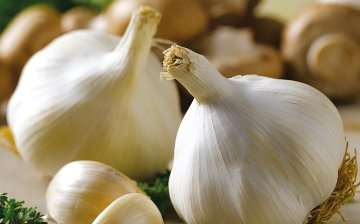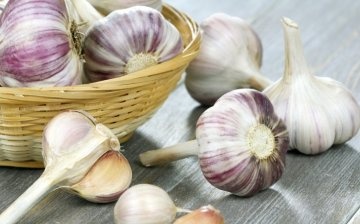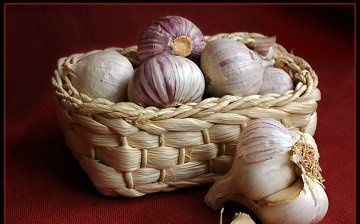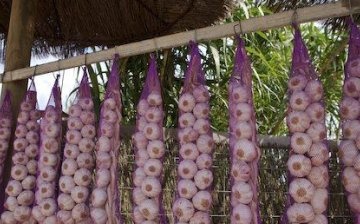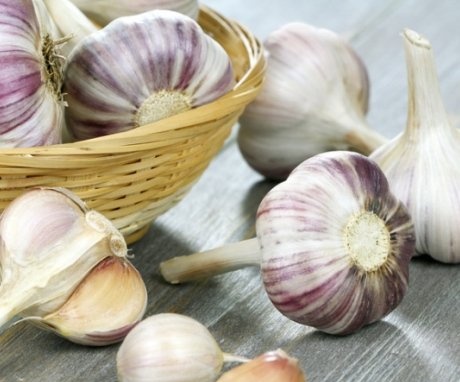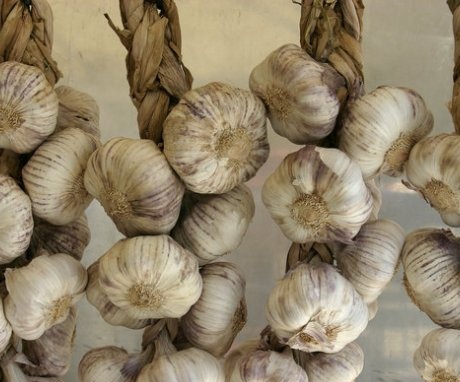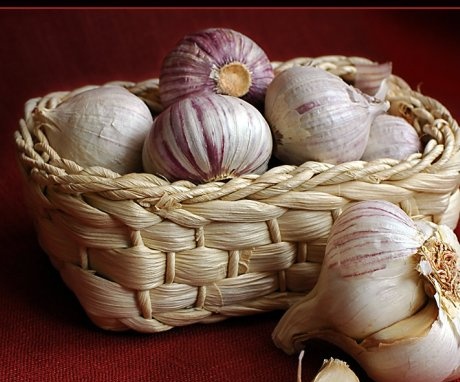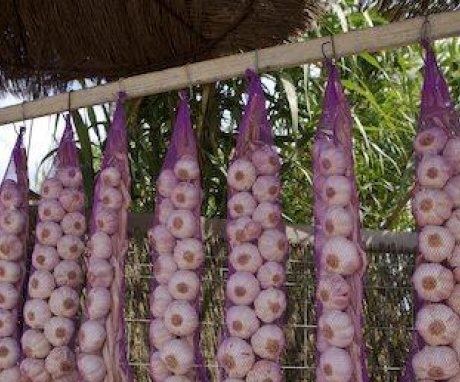How to store garlic at home: preparation and storage methods
Garlic is a unique food that is widely used in cooking. It is also very often used to treat various ailments.
Content:
Features of garlic
Garlic has unique properties. This is an original food supplement that cannot be replaced by any other product in the world. Garlic belongs to the category of perennial herbaceous plants. It refers to the onion family.
Description of garlic:
- This plant has a rather complex bulb shape, which contains from 3 to 20 individual bulbs.
- Each clove of garlic has a special husk that protects it from negative environmental influences.
Garlic is a popular vegetable cropwhich is used as food by the peoples of the whole world. This is due to the fact that garlic has an original smell and is characterized by a sharp taste. Garlic contains a large amount of carbohydrates, which makes it very useful and nutritious. In order to preserve all the taste and healing properties of garlic, it is necessary to properly preserve it.
How to properly prepare garlic for storage?
Winter garlic is harvested at the end of June, and spring garlic - at the beginning of August. It is necessary to harvest this plant only in dry weather. Otherwise, the garlic will not be stored for a long time and deteriorate. Cleaning is done in the evening or morning, when the exposure to sunlight is not strong. After the garlic is pulled out of the ground, spread it out in the fresh air and let it lie down for a while. Only then will the bulbs be dried.
Preparation for storing garlic is to properly cut it:
- The roots of this plant are removed using a pruner, knife or scissors.
- After that, the place of the roots is burned with fire.
- The stalk of the garlic also needs to be trimmed. In this case, it is necessary to retreat from the beginning of the neck 1.5-2 centimeters.
Even with proper preparation of garlic for storage, it can be in an apartment for no more than 3-4 months.
In the event that the garlic freezes, then it can not only lose its taste, but also useful vitamins. In order to extend the shelf life of this product, it is necessary to calcine the sunflower oil for two hours. Iodine is added to it (20 drops per 1 liter).
Each head of garlic must be treated with this solution. After processing, the heads should dry well in the sun. Only after that it is necessary to store the garlic.
Storage features
Today, there are several methods of storing garlic that preserve its taste and useful properties.
The main ones include:
- Storage in glass containers
- Storage in wooden boxes
- Storage in nylon stockings
- Storage in natural fabric bags, etc.
The storage method in wooden boxes is very productive. This container should not be solid in order for air to flow to the garlic. A small layer of salt is poured into the box, on which a row of garlic heads is placed. Next, the garlic is again covered with salt, and again laid with a number of heads.
The procedure is repeated until the container is filled to the top. Thanks to this storage method, you can preserve the juiciness and taste of this product until spring. Very often, instead of salt, ash or very fine wood sawdust is used.
An effective way to preserve the taste and beneficial properties of garlic is to store it in bags made of dense natural fabric.
To do this, it is necessary to place garlic in bags along with onion peels. This method will be effective when this product is purchased in stores in small quantities.
A fairly straightforward way of storing garlic is to use nylon stockings or tights. This storage method is quite old and at the same time very effective. Garlic must be folded into a net of tights only in dry form. Thanks to this, its shelf life can be significantly increased. Place the garlic stocking in a cool and dry place. When storing this method, it is best to hang the garlic, which will provide very good air circulation.
To preserve the unique properties of garlic, glass containers are often used. To do this, you must use perfectly dry glassware. The heads of garlic are packed tightly in jars and closed with plastic lids. In order to extend the shelf life of the heads of garlic, it is necessary to sprinkle the e6go in a glass dish with flour. The flour layer should be more than two centimeters.
The simplest and oldest method of storing garlic is storage in "braids":
- To do this, when harvesting this plant, the stems are not cut from it.
- After harvesting and drying the garlic, it is braided into special braids with the help of stalks.
- Such bundles are hung from a wall or ceiling in a dark and cool room.
- The storage temperature of garlic in this way should be from -1 to -3 degrees. If the room is warmer, then this plant will begin to germinate, and if it is colder, it will freeze.
- Also "braids" from bulbs can be in a cool corridor or in the kitchen.
Storage of garlic in paraffin is quite effective. For this, molten paraffin is taken. Each head of garlic must be dipped in it, after which the paraffin is allowed to drain. Thanks to this substance, moisture from the heads of garlic will not be able to evaporate, which will allow it to maintain its taste.
You can also keep the peeled heads of garlic for a long time. To do this, peel the garlic cloves and put them in a glass jar. To seal the heads of garlic, shake the jar. The heads are filled with sunflower oil and closed with a polyethylene lid.
The lid must necessarily have holes, otherwise the garlic may "suffocate".
Once stored, the oil can be used for cooking. It should be borne in mind that it will have enough pleasant garlic smell... Very often, cardboard boxes, wicker baskets or vegetable crates are used to store garlic. These containers must necessarily have holes, which will allow the garlic to "breathe" during storage.
The bulbs must be spread evenly. The boxes are placed in a dry and cool place, which can be a pantry, a balcony, a cellar, etc. If you adhere to all the rules for storing garlic, then you can significantly extend its shelf life. Absolutely all methods of storing garlic are quite effective. The choice of method directly depends on the wishes and requirements of the gardener.
More information can be found in the video.



